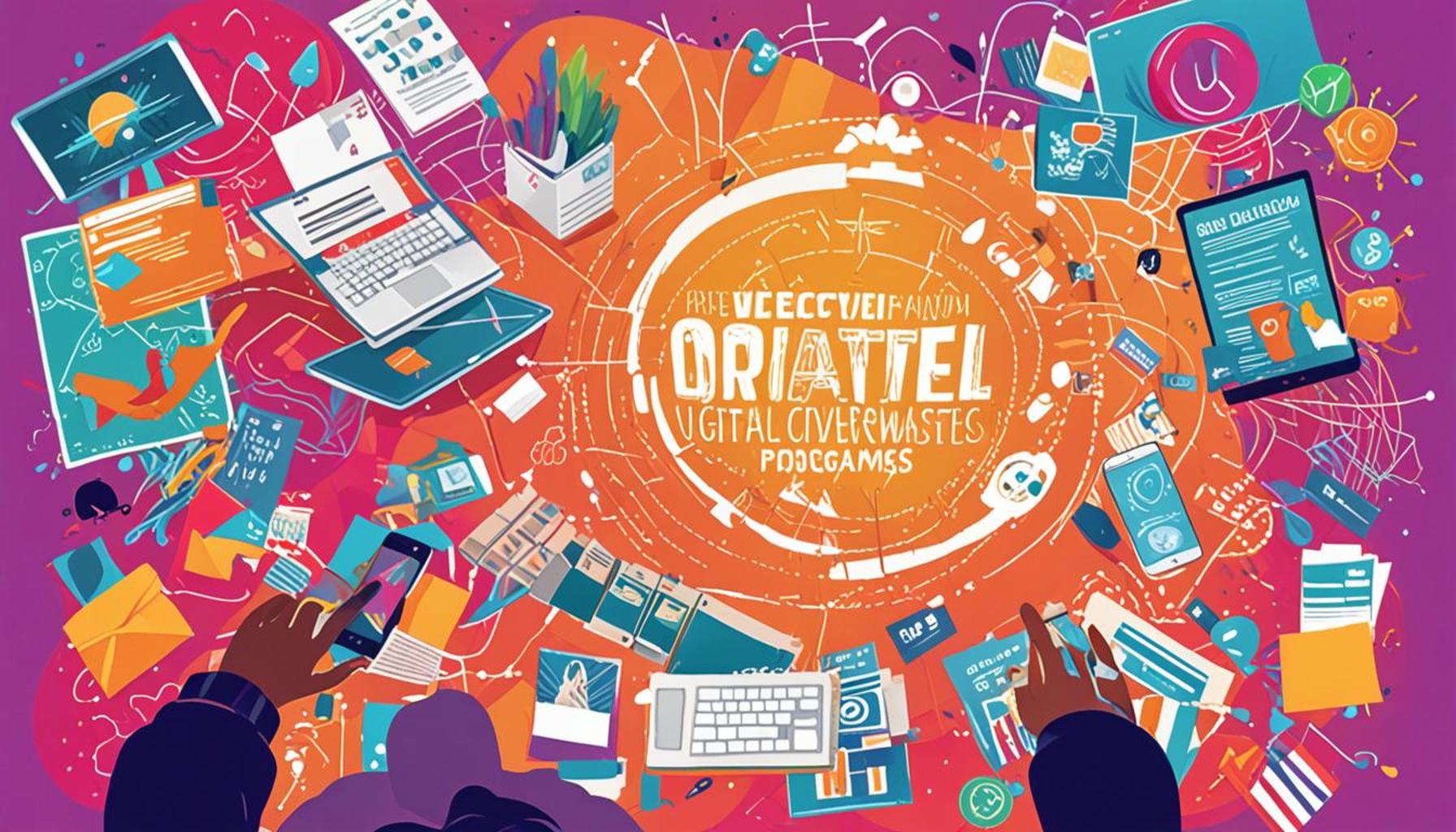Effective Digital Outreach Strategies to Increase Participation in Government Assistance Programs

The Necessity of Digital Outreach
In a world where information is at our fingertips, the challenge lies not in the availability of assistance programs but in ensuring that eligible individuals know these resources exist. Millions of Americans may qualify for essential support such as healthcare, housing assistance, or food programs, yet many remain unaware of their options. This situation underscores the importance of effective digital outreach strategies, which can significantly enhance participation rates and improve community well-being.
Utilizing technology to engage communities requires a multifaceted approach, integrating various tools and techniques that resonate with diverse audiences. For example:
- Social Media Campaigns: Platforms like Facebook, Instagram, and Twitter have millions of active users. By creating targeted advertisements and engaging posts, government agencies can reach different demographics, including younger audiences who predominantly get their news and information from social media. Hashtags related to assistance programs can also help to increase visibility and spread awareness organically.
- Email Outreach: Personalized emails can provide crucial information tailored to the needs of specific communities. By segmenting the email list based on demographic data, agencies can send customized messages that address the unique challenges faced by various groups, whether they are low-income families, veterans, or the elderly. Additionally, informative newsletters can serve as a consistent reminder of the available resources.
- Webinars and Online Workshops: Hosting live sessions allows agencies to explain program benefits, eligibility criteria, and application processes interactively. These online events can demystify complex topics like healthcare enrollment or housing vouchers, making it easier for attendees to understand how to get involved. The inclusion of Q&A sessions helps build trust and addresses specific concerns from participants.
By employing these tactics, government agencies can effectively bridge the information gap that often leaves vulnerable populations in the dark regarding available assistance. With government budgets often limited, maximizing digital efforts not only increases the awareness of programs but also promotes community participation and fosters a sense of trust in public services.
Success Stories and Best Practices
Looking across the United States, several case studies demonstrate the effectiveness of these digital outreach methods. For instance, California’s Department of Social Services launched a targeted social media campaign that resulted in a 45% increase in applications for food assistance programs within just three months. This program utilized localized ads that highlighted personal stories from beneficiaries, creating a relatable narrative that encouraged others to apply.
Moreover, best practices in digital outreach include continually analyzing engagement data to refine strategies. By assessing which types of content generate the most interest, agencies can tailor their messages for greater impact. Engaging with community leaders and establishing partnerships with local organizations can also enhance outreach effectiveness, ensuring that the message reaches those who stand to benefit the most.
In conclusion, as we navigate the evolving digital landscape, understanding and implementing effective outreach strategies to connect citizens with vital assistance programs is imperative. Through informed action and judicious use of technology, we can cultivate stronger, more informed communities ready to take advantage of the resources available to them.
SEE ALSO: Click here to read another article
Innovative Approaches to Digital Outreach
In the digital age, traditional outreach methods are no longer sufficient to ensure that eligible individuals are aware of government assistance programs. To increase participation, agencies must adopt innovative digital outreach strategies that leverage the power of modern technology. Here are some promising approaches that have emerged as effective tools in connecting with communities across the United States:
- Mobile-Friendly Access: With over 80% of American adults owning smartphones, developing mobile-responsive websites and applications is crucial. Many individuals rely on their mobile devices for information, especially younger populations and low-income communities who may not have access to computers. Ensuring that program details, applications, and support services are easily accessible via mobile platforms can significantly enhance participation.
- Search Engine Optimization (SEO): Implementing robust SEO strategies helps agencies improve their online visibility. By optimizing website content with keywords related to government assistance programs, agencies can increase the likelihood that individuals searching for support will find their resources. It’s essential to conduct keyword research focused on the specific needs of target demographics to maximize reach.
- Community Engagement through Local Influencers: Partnering with local influencers or community leaders can amplify outreach efforts. These individuals often have established trust within their communities and can spread crucial information about government assistance programs through their platforms. By collaborating with trusted voices, agencies can enhance the credibility of their messages and encourage word-of-mouth referrals.
- Interactive Content: Creating engaging and interactive content, such as quizzes or eligibility checkers, can actively involve potential applicants in the discovery process. When individuals can assess their eligibility through a simple online tool, they are more likely to take the next step and apply for assistance. This form of content also encourages users to share the tool with friends or family members who might benefit, increasing its reach.
The ongoing challenge lies in addressing the specific barriers that deter individuals from participating in these vital programs. Factors such as language barriers, limited internet literacy, and distrust in government services can all impede outreach efforts. Therefore, tailoring digital strategies to accommodate diverse community needs is not just beneficial; it is essential.
Research indicates that a significant number of qualified applicants remain uninformed. For instance, a study by the U.S. Department of Agriculture revealed that nearly 83% of eligible households do not participate in the Supplemental Nutrition Assistance Program (SNAP). This statistic illustrates a critical gap that can be bridged through effective digital outreach.
As agencies explore innovative approaches, it’s imperative to continuously monitor engagement metrics to assess the effectiveness of outreach strategies. Testing different messages, tools, and formats can inform adjustments that ultimately lead to increased participation rates in government assistance programs. With diligence and strategic implementation, these digital outreach efforts can foster a more informed populace poised to access the support available to them.
| Category | Details |
|---|---|
| Social Media Engagement | Leveraging platforms like Facebook and Twitter to disseminate information quickly and engage users in real-time. |
| Targeted Advertising | Utilizing algorithms to reach specific demographics who may benefit from government assistance, increasing awareness and eligibility determination. |
| Email Campaigns | Sending personalized messages to potential beneficiaries, providing detailed information on programs, deadlines, and application processes. |
| Mobile Applications | Developing user-friendly apps that allow individuals to check eligibility, apply for assistance, and receive updates on their applications. |
| Webinars and Online Workshops | Hosting virtual sessions to explain programs in detail, answer questions, and guide potential participants through the application process. |
| Engaging Community Partners | Collaborating with local organizations and influencers to reach underserved communities, ensuring no one is left behind in accessing vital assistance. |
The rapid digital transformation calls for innovative methodologies to target and engage potential participants in government assistance programs. Strategies like social media engagement can facilitate lively discussions and instant feedback, making programs more appealing. Equally, targeted advertising can ensure that vital information reaches those most in need, enhancing program enrollment and participation rates.Furthermore, the utilization of email campaigns allows for direct communication with interested individuals, making the process of applying for assistance less intimidating. By adopting mobile applications, agencies can empower users to connect with services conveniently, combining ease of use with accessibility. Online webinars and workshops present an interactive dimension to outreach, allowing potential beneficiaries to familiarize themselves with programs in a supportive environment. Lastly, collaboration with community partners enhances outreach efforts, creating a more inclusive approach that reaches diverse populations effectively.
ADDITIONAL INSIGHTS: Expand your understanding here
Building Trust and Accessibility through Digital Engagement
As agencies adopt innovative digital outreach strategies, addressing the inherent trust issues surrounding government programs is vital. Many eligible individuals harbor skepticism regarding government services, which can hinder participation rates. A compelling approach involves fostering trust through transparency and accessibility. Here are some strategies to effectively build rapport and foster reliable connections within the community:
- Utilizing Testimonials and Success Stories: Sharing testimonials from individuals and families who have successfully benefitted from government assistance can significantly humanize programs. Case studies and video testimonials can provide real-world examples of how these services have positively impacted lives. By showcasing tangible results, agencies can create relatable narratives that resonate with potential applicants and alleviate concerns about stigma or abuse of the programs.
- Multilingual and Inclusive Resources: Given America’s diverse population, the provision of multilingual resources is critical in ensuring accessibility. Websites, applications, and informational materials should be available in multiple languages to cater to non-English speakers. Moreover, the use of simple, jargon-free language aids those with limited literacy skills, allowing a broader demographic to understand the available assistance options.
- Social Media Campaigns with Interactive Engagement: Social media platforms are powerful tools for reaching a vast audience. Engaging potential applicants through interactive content, such as live Q&A sessions, polls, and community discussions, can foster a sense of belonging and connection. Agencies can promote initiatives using targeted ads that focus on specific demographics, ensuring that the message reaches the intended audience effectively.
- Dedicated Help Lines and Chatbots: Providing dedicated help lines and chatbots can streamline the request process. These resources not only deliver immediate assistance but also enhance user experience. An intuitive chatbot can guide users through the application process or direct them to relevant resources, mitigating frustration and confusion related to program details.
According to the Pew Research Center, approximately 72% of American adults use some form of social media, making it an opportune platform for outreach. With targeted campaigns that resonate with specific communities on these platforms, agencies can directly address their concerns and needs, thus eliminating barriers to access. Tailored messaging can address common misconceptions and foster trust by emphasizing the benefits and ease of use of government assistance programs.
Furthermore, data analytics play a crucial role in understanding community needs and preferences. By tracking engagement metrics across various digital platforms, agencies can identify which outreach efforts yield the best results. Analyzing demographic data allows for the crafting of focused and tailored messaging that speaks directly to the unique hurdles faced by different populations.
Ultimately, an effective digital outreach strategy must go beyond just the dissemination of information; it must cultivate a supportive digital ecosystem. By prioritizing community trust, addressing language barriers, and leveraging digital platforms creatively, agencies can increase visibility and participation in government assistance programs, ensuring that critical support reaches those who need it most.
YOU MAY ALSO LIKE: Read read another article
Conclusion: Fostering Inclusion through Digital Outreach
In conclusion, the success of government assistance programs heavily relies on effective digital outreach strategies that prioritize trust, transparency, and accessibility. The challenges of skepticism and misinformation cannot be underestimated, but with a well-crafted approach, agencies can effectively bridge the gap between services and the communities that need them most. By incorporating testimonials and success stories, programs can humanize their offerings and encourage participation through relatability.
Moreover, the implementation of multilingual resources can drastically improve accessibility, ensuring that language barriers do not exclude eligible individuals from receiving assistance. This approach, coupled with engaging social media campaigns that spark interaction and community dialogue, can create an inclusive atmosphere that makes participating in these programs feel straightforward and beneficial.
The importance of utilizing data analytics to tailor outreach strategies cannot be overstated. Agencies can glean insights about community needs, allowing for precise messaging that addresses unique demographics. This continuous feedback loop will enable programs to adapt and evolve, making them more relevant and user-friendly.
Ultimately, as digital technology continues to play a pivotal role in communication, government agencies must commit to fostering a supportive digital ecosystem. By leveraging these effective outreach strategies, we can ensure that critical government assistance programs reach those who need it, helping to create a more equitable society. The path to increasing participation is paved with informed strategies—it’s time to explore them and make impactful changes.



